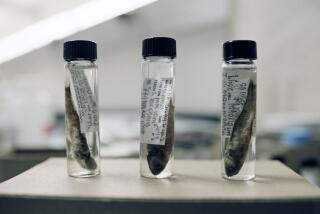Oil is more toxic than previously thought, study finds
Bad news for the Gulf of Mexico: a study released this week sheds new light on the toxicity of oil in aquatic environments, and shows that environmental impact studies currently in use may be inadequate. The report is to be published this week in the Proceedings of the National Academy of Sciences.
The study, spearheaded by the UC Davis Bodega Marine Laboratory in collaboration with NOAA, looked into the aftermath of the 2007 Cusco Busan spill, when that tanker hit the San Francisco-Oakland Bay Bridge and spilled 54,000 gallons of bunker fuel into the bay.
The key finding involved the embryos of Pacific herring that spawn in the bay. The fish embryos absorbed the oil and then, when exposed to UV rays in sunlight, physically disintegrated. This is called phototoxicity, and has not previously been taken into account when talking about oil spills.
“This phenomenon had been observed in the laboratory, but had never been observed in the field, and there were even some skeptics out there wondering if this was just a phenomenon that people would see under lab conditions,” said Gary Cherr, director of the marine lab and professor of environmental toxicology.
“One of the real take-home messages from our study was: yes, in fact, it definitely happens in the real world.”
This is another big jump in understanding the real damages from oil spills. Studies of the 1989 Exxon Valdez spill created an entirely new understanding of oil damage when it was found that oil was toxic in minute quantities measured in parts-per-billion and even parts-per-trillion – much lower than previously recognized. This finding of phototoxicity, however, presents a new challenge.
Phototoxicity is a phenomenon that is well known to human users of certain antibiotics, which can cause a rash if the person is exposed to direct sunlight. It has also long been associated with crude oil and creosote, which can cause a nasty redness on human skin when combined with sun exposure.
“It’s kind of a new paradigm in thinking about the toxicity of oil,” adds Cherr. “Up until now, there has been this awareness of it in the laboratory studies, but it has not been taken into account in the real world, in environmental analyses, and certainly in regulating the amounts of oil that are spilled.”
In the wake of BP’s 2010 Deepwater Horizon blowout in the Gulf of Mexico, for example, much of the spilled oil stayed at depth, but that which did rise through the water column could have produced phototoxic effects that are still unknown and unstudied.
RELATED:
US fights EU on airline carbon emissions
EPA issues strong limits on mercury emissions from smokestacks
Lawsuit challenges animal enterprise terror law as unconstitutional
-- Dean Kuipers






